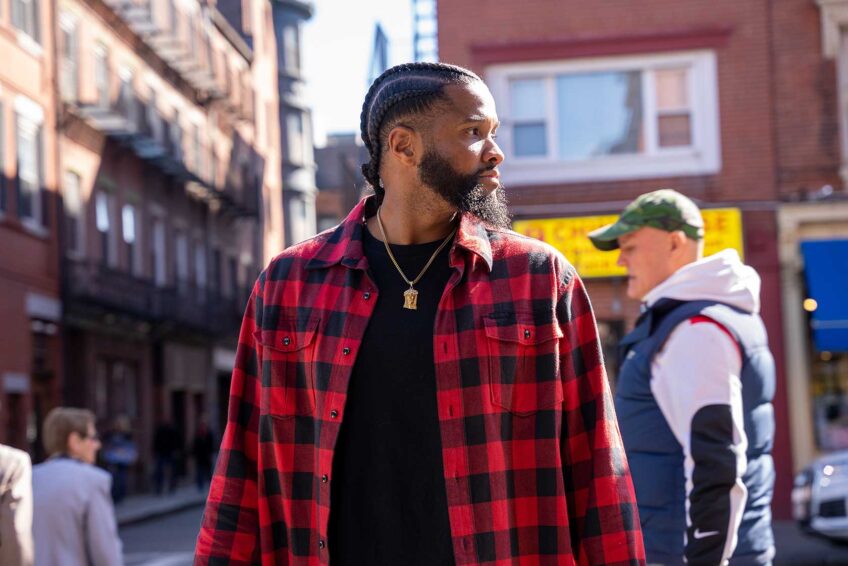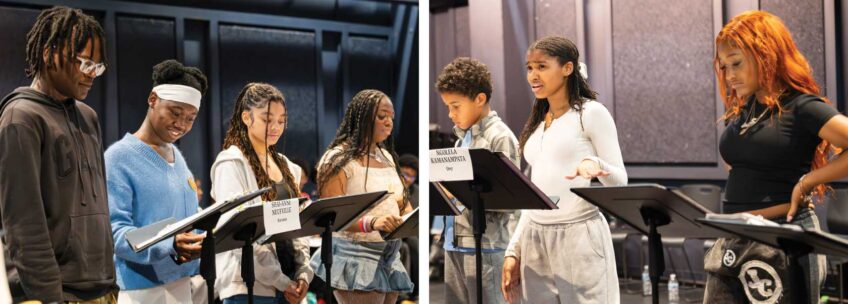“Harriet Jacobs” is the dramatic true story of a gutsy, literate slave who escaped to Cambridge.
Based on Jacobs’ autobiographical “Incidents in the Life of a Slave Girl,” Lydia R. Diamond’s play captures life in the American South between 1829 and 1842.
Produced by Underground Railway and The Providence Black Repertory Company, the play completed a successful run at the Central Square Theater on Jan. 31 and is now appearing at the Hibernian Hall through March 7.
Except for Jacobs’ boyfriend, Tom, who will be played by Cheo Bourne in Hibernian Hall, the casting is the same. As are the lighting and staging.
The story-line is fairly well-known. Jacobs spent seven years hiding in a crawl space to protect herself from her master. Eventually, she came north, running a boarding house near Harvard Square. Jacobs is buried in Mount Auburn Cemetery.
This production is distinct in several ways. Says Director Megan Sandberg-Zakian, “The first rule was no bare feet” among the characters, because “you see a lot of slave plays where everyone’s always barefoot and wearing burlap sacks.”
The all-black cast plays all the roles, including the white ones. The half of the cast that plays white characters portrays black ones as well. They don white gloves when they take on white roles. Obehi Janice, who plays roles of both races, appreciated that this approach expands the opportunities available to black actors, and noted the connection between putting on white gloves and “tapping into white privilege.”
Sheldon Best, who played Jacobs’ boyfriend during the Central Square run, said that, if audience members saw a white man attacking a black person, they might be inured to it, since they had seen it before. Best also said, “Race is almost not an issue,” in the play. “The other issues,” he continued, “take first place.”
As Sandberg-Zakian is quick to point out, “It’s about power. It’s about money. It’s about gender.”
Interspersed with Jacobs’ direct communication with the audience about her story and the interactions the characters have with each other, are vignettes in which a single slave’s experience is highlighted.
In each vignette, a slave faces the audience and briefly describes one incident from his life.
This less-is-more approach is powerful. Actually, “powerful” is an understatement when applied to anything in this play.
With exquisite timing, just before the pain of their suffering becomes unbearable for a squirming audience, the cast stops talking and starts to make music.
“Slavery is unspeakable, so the music doesn’t have words,” Janice explained.
De’Lon Grant, another actor, said, “Song was not a way just to escape, but to express what you couldn’t express in words—what you weren’t allowed to express.”
Ramona Lisa Alexander, who plays Jacobs’ grandmother, explained that the music comes from deep within.
Dr. Clarice LaVerne Thompson, the show’s composer and music director, described the music as the “connective tissue” of the play.
The show doesn’t just consist of pain and music, though. The play has its light-hearted moments, such as when Jacobs flirts with her boyfriend.
Also, a lot of courage was displayed by various characters. For example, Harold Skinmore, a slave played by Mishell Lilly, refused to rape a girl, despite his overseer’s command. Jacobs read books when, as a slave, she was forbidden to.
Alexander’s 11-year-old niece let her family know that she didn’t feel ashamed watching this play about enslaved people. “She walked away feeling proud,” said Alexander.






